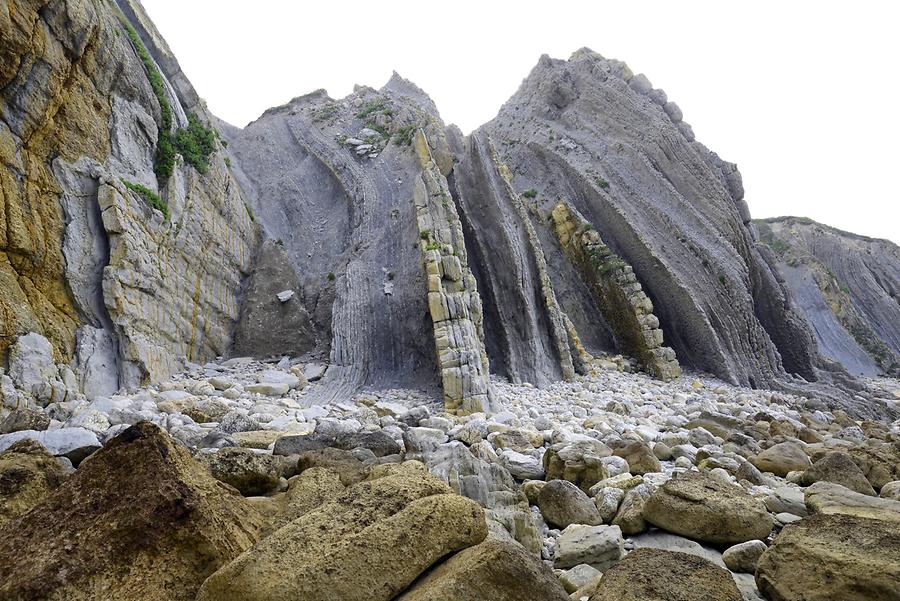Flysch Coast near Liencres#

Flysch Coast near Liencres, July 2013, © Gerhard Huber, under CC BY-NC 4.0 +Edu
Along the coast of Liencres
Spain Liencres
toothed, vertical rock slabs rise from the sea like Cyclopean walls. In geology, this phenomenon is known as the "Flysch". The bizarre coastlines were formed below the sea surface. During the orogeny rock avalanches broke away frequently and were deposited on the continental shelf. Above it, a clay layer sedimented over the course of millennia, before the next avalanche came. What remained, is an Ildefonso pattern with layers of clay and rock, the so-called "flysch". Geological uplifts and foldings formed these layers into wavelike patterns and transported them to the surface.
An der Küste von Liencres
Spanien, Liencres
ragen von Zacken gekrönte, vertikale Felsplatten wie Zyklopenmauern aus dem Meer. In der Geologie ist dieses Phänomen unter dem Namen „Flysch“ bekannt. Die bizarren Küstenabschnitte bildeten sich unter der Meeresoberfläche. Während der Gebirgsbildung lösten sich immer wieder Gesteinslawinen, die sich am Kontinentalschelf ablagerten. Darüber entstand im Laufe von Jahrtausenden eine Tonschicht, bevor die nächste Lawine kam. Zurück blieb ein Ildefonso-Muster mit Schichten aus Ton und Gestein, ein sogenannter „Flysch“. Geologische Hebungs- und Auffaltungsprozesse formten diese Schichten zu wellenartigen Mustern und beförderten sie an die Oberfläche.